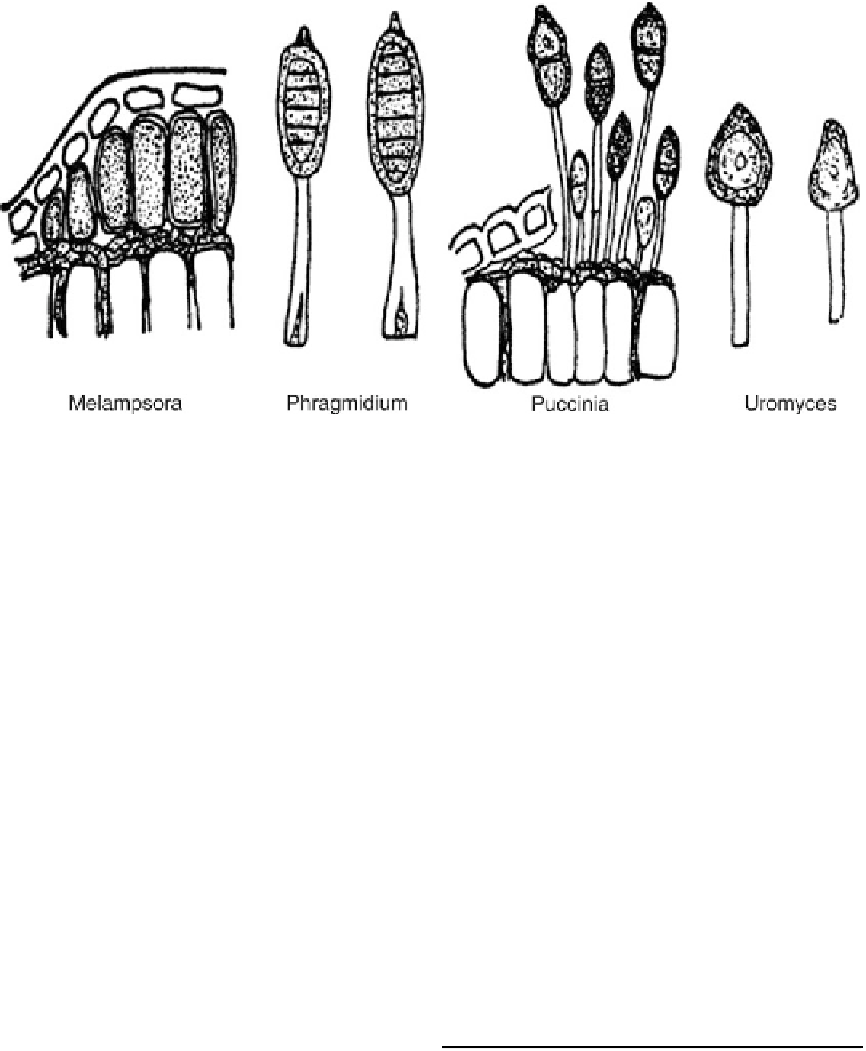Biology Reference
In-Depth Information
Fig. 3
Teliospores.
Melampsora
, sessile in crust under host epidermis;
Phragmidium
, stalked, with several cells;
Puccinia
, stalked, two-celled;
Uromyces
, stalked, one-celled
Melampsora paradoxa (
M. bigelowii
).
Larch-
Willow Rust
.0, I on larch; II, III on many species
of willow. The damage to larch is insignificant.
The fungus winters on willow as mycelium in
catkins, terminal buds, and young stems and can
maintain itself on willow in the uredial stage
without larches.
Melampsora ribesii-purpureae 0, I on currant,
flowering currant and gooseberry; II, III on wil-
low species.
in spring; aecia form in summer on underside, in
two rows of orange blisters. The disease is sel-
dom serious enough for control measures. In for-
est practice remove trees with main stem
infections early in life of the stand.
Melampsoridium
Melampsoraceae. Heteroecious, on larch and
dicotyledonous shrubs and trees; pycnia
subcuticular; other sori subepidermal; teliospores
sessile, one-celled.
Melampsoridium betulinum
Birch Leaf Rust
.
0, I on larch; II, III on birches. Uredia on underside
of birch leaves are small reddish yellow powdery
pustules, followed later in summer by telia, first
waxy yellow, then dark brown to nearly black.
Melampsorella
Melampsoraceae. Heteroecious on fir, spruce,
and dicotyledons; pycnia subcuticular, aecia and
uredia subepidermal, telia in epidermal cells.
Only one species in United States.
Melampsorella caryophyllacearum (
M.
cerastii
).
Yellow Witches' Broom Rust
.0,Ion
many firs; II, III on chickweed. Infected ever-
green branches develop numerous upright lateral
shoots from one point, forming a compact
witches' broom; twigs are dwarfed, and needles
turn yellow and drop, leaving broom bare. The
fungus is perennial in stems, and shoots develop
with yellow leaves. Pycnia appear in raised
orange spots on both surfaces of dwarfed leaves
Milesina
Melampsoraceae. Heteroecious on firs and ferns.
All spores are colorless; urediospores obovate or
laceolate; teliospores in epidermal cells.
Milesina fructuosa 0, I on balsam fir; II, III on
Dryopteris
spp. Aecia are white on current
needles, maturing by midsummer.




